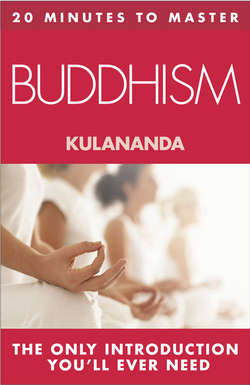Читать книгу 20 MINUTES TO MASTER … BUDDHISM - Kulananda - Страница 12
CHAPTER 2 THE DHARMA
ОглавлениеAfter the Buddha’s death his followers correlated all of his major teachings. In time these were set to verse, committed to memory and passed down from generation to generation in what must be one of the most magnificent episodes of oral tradition in human history, for the ‘literature’ thus transmitted was immense. Similar, in its oral nature, to the Greek Homeric Epics, it was much more extensive and more highly organized. When finally committed to writing, as it began to be around about the first century BCE, it eventually came to occupy what in modern terms would be a small library.
Having eventually been written down, in Pali, Sanskrit or other variants of Indian contemporary language, the Dharma – the teachings of the Buddha – developed and expanded. New material was brought in, and a vast canonical literature comprising records of the Buddha’s discourses and discussions, stories, parables, poems, and analyses gradually grew up.
Rather than a single, pleasantly portable Bible, the Buddhist canonical literature is very extensive. Traditionally it is spoken of as the Tripitaka, the Three ‘Baskets’, perhaps harking back to a time when texts were kept in that way. There is the Sutra-Pitaka, the collection of discourses either spoken by the Buddha or by one or another of his Enlightened disciples; the Vinaya-Pitaka, which contains accounts of the development of the early Sangha, as well as the monastic code; and the Abhidharma-Pitaka, a compendium of Buddhist psychology and philosophy.
As the Buddhist tradition split into different schools, each had its own version of the Tripitaka, although there are very substantial overlaps between them. Versions of the Canon which were written in Sanskrit have mainly been lost, and now exist for the most part only in Chinese, Japanese and Tibetan translation, whereas the Pali Canon was preserved intact in the language in which it first came to be written.
With the passing of time, the tree of the Dharma has sprouted new branches and stems as great Enlightened masters brought their own particular insights to bear on it. Apart from its existence in literary form, there are also oral lineages of Dharma transmission, from master to disciple, and even purely mental lineages, where the nature of reality is ‘pointed out’ in direct communication, unmediated by texts or liturgy. The Dharma can be transmitted in any way that results in people being brought closer to an understanding of ultimate truth.
One of the most common ways in which the Dharma has been transmitted is by way of the ‘lists’ with which Buddhism abounds. Taken together, these form a vast interlocking matrix of both doctrine and method which contain the whole of the Dharma. Taken singly, each list contains within it the seeds of all the rest, for the Dharma is like a vast jewelled net, where every jewel in the net perfectly contains and reflects the image of every other jewel.
The list of lists is immense – there are, to name but a very few, those which between them make up the Thirty-Seven Bodhipakkhiya-Dhammas – 37 ‘Teachings Pertaining to Enlightenment’. These are: Four Foundations of Mindfulness; the Four Exertions; the Four Bases of Psychic Power; the Five Spiritual Faculties; the Five Spiritual Powers; the Seven Factors of Enlightenment and the Noble Eightfold Path. Opaque as these will doubtless seem to the newcomer, these lists are in fact an invaluable treasury of spiritual teaching.
Perhaps the most popular of all of these sorts of teaching is the teaching of the Four Noble Truths and the Noble Eightfold Path, which formed a major part of the Buddha’s first ever discourse on the Dharma.
